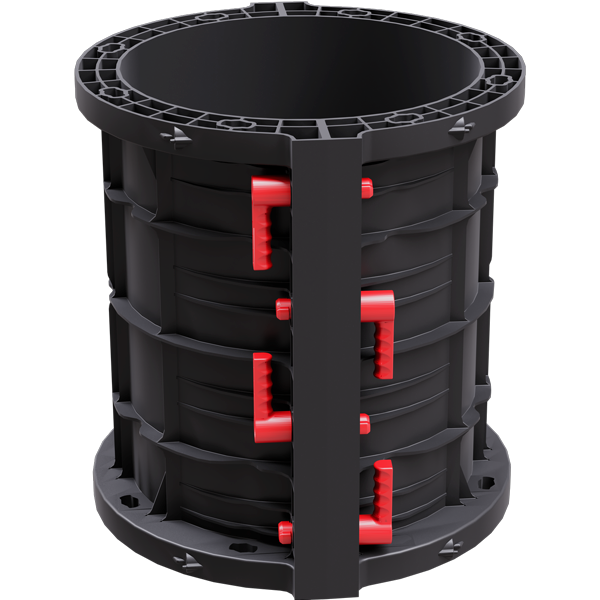GEOTUB
–Faq
How high is the formwork? Which sizes are available?
The formwork is 60 cm high. The available diameters are the following 11 ones: 25,30,35,40,45,50,60,70,80,90,100 cm.How much pressure does GEOTUB system resist to?
GEOTUB system resists up to 80 KN/m² fresh concrete pressure. The round section of GEOTUB, with consequent pressure distribution, allows an higher resistance of the formwork.Are there any particular pour prescription? May I use any kind of concrete?
According to UNI EN 206:2006 and UNI 11104:2004 (the reference standard is DIN 18218: 2010-01 ), we provide a calculation chart of the concrete pour speed to mantain pressure on the formwork below the stated resistance limit. Tests were performed on GEOPLAST formwork with concrete of consistency class of S4, but it is possible to use also S5 or SCC concretes with a reduction of the pour speed.Are all the fixing handles necessary? How much traction do they resist?
Yes, they are. The supplied red handles resist up to 1400 Kg traction, but every one of them is necessary to guarantee the resistance of the formwork. The fixing of the panels can be only made with GEOPLAST handles, and any other method to join the GEOTUBs can not be guaranteed by us.Does the formwork require any dismantling agent?
No dismantling agent is required. It is necessary just to clean properly the elements. If any dismantling agent is needed, use water-based ones or very diluited ones (2 parts water, 1 part dismantling agent).How much time do I neet to install the formwork for a column of 3,00 m high?
The first column requires 10-15 minutes. Then it is possible to move directly one half of the column, reducing a lot the installation time.What is the max height of single concrete pouring?
See this table
Diameter |
25 |
30 |
35 |
40 |
45 |
50 |
60 |
70 |
80 |
90 |
100 |
H (m) |
6,00 |
6,00 |
6,00 |
6,00 |
4,80 |
4,80 |
4,80 |
3,60 |
3,60 |
3,60 |
3,60 |
Heights refers to a single concrete pour. It is possible to build higher columns, with a pause of at least 2 hours (it depends on the temperature) between one pour and the following one.
